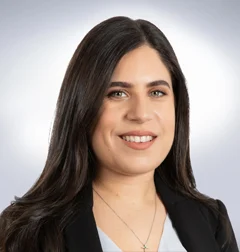![Case summary: MTH v State of New South Wales [2025] NSWCA 122](https://www.codea.com.au/wp-content/uploads/2024/04/Images-1-1.webp)
Case summary: MTH v State of New South Wales [2025] NSWCA 122
Published on July 18, 2025 by Christiane Fahd and Emily Katheklakis
The case of MTH v State of New South Wales is a significant judgment addressing the State of New South Wales’s liability for historical child sexual abuse in foster care. The proceedings revolve around the complex issues of duty of care, negligence, and the statutory protections afforded to public authorities under section 43A of the Civil Liability Act 2002 (NSW).
By way of factual background, at the age of four, the Plaintiff, MTH (a pseudonym) was made a ward of the State. She was removed from her natural family and immediately placed with long-term Departmental foster carers, Mr and Mrs Phelan, where she remained for the next twelve years. During this time, the Phelans expressed a desire to formally adopt MTH. However, this failed due to her birth mother refusing to agree to this. It was reported that in 1978, conflict arose between MTH and Mr Phelan. As a result of this, the Phelans requested that MTH be removed from their care. MTH was then placed with Geoffrey and Sandra Croft in 1979. During her time with the Crofts, MTH was sexually and physically assaulted a number of times by Geoffrey Croft.
It is worth noting that Geoffrey Croft was convicted on two counts of sexual assault in 2019, following a complaint made by the Plaintiff to NSW Police in 2012. These convictions included sexual abuse perpetrated by Geoffrey against another foster child in his care, known as RS, prior to the period when MTH was residing with them. Mr Croft passed away in the years following his conviction.
Primary hearing
In 2020, the Plaintiff, MTH, brought civil proceedings against three Defendants, being the State of New South Wales, and her former foster carers Geoffrey Croft and Sandra Croft. The Plaintiff was not legally represented. She had formerly retained two different firms, however chose to proceed on her own.
In her claim against the State of New South Wales (first Defendant), the Plaintiff claimed that they were negligent in relation to the following:
(a) Failure to facilitate her adoption by the Phelans;
(b) Placing her with the Crofts, where she was sexually and physically assaulted over a period of time; and
(c) Failing to facilitate relationships with her biological siblings.
The plaintiff made a further claim against the State of New South Wales, stating that they were vicariously liable for the abuse by Geoffrey Croft, and that their officers failed to intervene and protect her from harm.
In her claim against Geoffrey Croft (second Defendant), the Plaintiff claimed damages for the sexual and physical assaults he perpetrated against her.
In her claim against Sandra Croft (third Defendant), the Plaintiff claimed that Sandra was negligent as she had failed to report or prevent the abuse by Mr Croft.
In June 2023, Mrs Croft sought a Permanent Stay of the proceedings against her, citing her advanced age and health issues that might impede a fair trial. This application was rejected by the Supreme Court of NSW, with Garling J stating: “Mrs Croft is of full capacity and is able to give evidence in response to the allegations including all of the surrounding facts and circumstances. She is able to provide full and complete instructions to her lawyers with respect to the defence of the claim. There is no material before me which suggested that she is any way impaired in her memory of the events during the time of MTH’s residence with her and Mr Croft at Cleggswood.”
At first instance, Justice Cavanagh ruled in favour of all three defendants. He did not accept the Plaintiff’s evidence as to the assaults and found issues with her reliability and credibility.
Appeal
The Plaintiff elected to appeal the decision. The Court allowed the appeal against the second Defendant, Geoffrey Croft, with costs, but dismissed the appeals against the first and third Defendants.
There are many legal issues that have arisen from this case. However, of significant importance is the relevance and application of Section 43A of the Civil Liability Act 2002 (NSW). This section of the Act protects public authorities from liability for acts or omissions made in the exercise of a “special statutory power”, unless the conduct was so unreasonable that no reasonable authority would have acted similarly. This was relied on by the State as part of their defence, in which they argued that the Plaintiff’s foster care placement with the Crofts was a decision made under this statutory power.
The Plaintiff’s claim against the State failed on this basis. The Court concluded that none of the claims brought by the Plaintiff, including the placement, adoption or reunification decisions met the threshold set out in Section 43A of the Act, in that they were so unreasonable that no authority could have acted similarly.
Specifically, with regard to the adoption case, it was found by the Court that it was not unreasonable for the State to consider that an adoption order was unnecessary or that a contested adoption request (in spite of the appellant’s birth mother’s wishes) could disrupt the long term relationship between MTH and the Phelans and provoke their intervention. Further to this, by the time MTH’s birth mother died, it was not unreasonable for the State to put the question of MTH’s adoption by the Phelans on hold.
In regard to the placement case, it was found that it was not unreasonable that the State considered the Crofts to be suitable carers for MTH. There was no suggestion that the State was aware that Mr Croft was physically or sexually abusive. It was noted that the usual investigations and enquiries were made by the State in relation to the Crofts and that this did not reveal a risk of harm within the placement.
In regard to the vicarious liability case in respect of the officers of the State, it was found that there was no act or omission alleged against them which could have formed a case against the State. As to the vicarious liability case in respect of Mr Croft’s conduct towards MTH, the Court found that the State was not liable for that conduct as Mr Croft was not an employee of the State.
In regard to the Plaintiff’s claim against Mrs Croft, the Court concluded that there was no evidence that she knew of the abuse at the time that it occurred, and that there was no obligation for her to act on the allegations following the Plaintiff’s removal from her care.
In terms of historical child abuse claims, this case highlights the legal hurdles abuse survivors face when pursuing civil claims against state institutions decades after the events, the threshold set out by section 43A in shielding public authorities from liability, the evolving understanding of foster carer responsibilities and whether they bear legal duties similar to those of parents or institutional carers.
It is important to note that each case is different, and that whether or not the State is liable for abuse by foster carers will depend on the facts of each case.
Please note that this article does not constitute legal advice. If you are seeking professional advice on any legal matters, you can contact Carroll & O’Dea Lawyers on 1800 059 278 or via our Contact Page and one of our lawyers will be able to assist you. If you or a loved one have been injured, use our Personal Injury Claim Check now.
Disclosure and important note: This article is based on our own legal research and thinking. Some of its content has been generated with the assistance of artificial intelligence. The authors have checked and approved this article, including the AI generated content, for publication.

